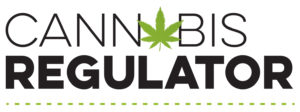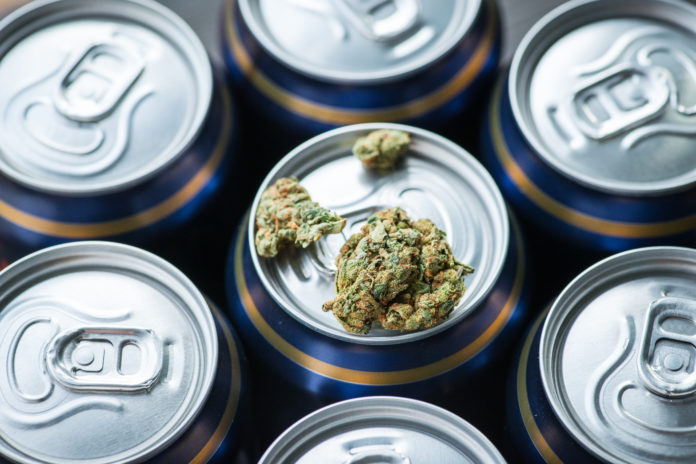Legal cannabis racked up more wins on Election Day 2022. Voters in both Maryland and Missouri approved recreational pot. Altogether, 21 states now have such laws, despite the substance remaining federally illegal. And while legalization efforts fell short in Arkansas, North Dakota and South Dakota, Colorado voters decriminalized psychedelic mushrooms in yet another sign of shifting attitudes towards recreational drugs.
What does all this mean for the alcohol industry? Like beer, wine and spirits, cannabis is a social substance, common at get-togethers, often alongside alcohol. Many brands have already launched cannabis beverages, whether with THC or CBD, or both. For a deeper dive into this category, and what may help it break through, we recently spoke with Jason Vegotsky, CEO of Petalfast, a route-through-market platform for the cannabis industry.
Cannabis Regulator: Why have we heard so much about cannabis beverages recently?
Jason Vegotsky: So much human behavior revolves around consuming beverages. Imagine not having a beverage in your hand while you’re gathering with other people. Typically, that beverage is alcohol, and it’s in a can. That behavior translates into canned cannabis beverages.
CR: What’s holding back cannabis beverages from broader acceptance?
JV: The biggest challenge is channel. If canned cannabis beverages were allowed in grocery stores, I think it would become a top-five beverage category. Instead, right now the main channel for cannabis beverages is dispensaries. And if you were picking channels for these beverages, dispensaries would be at the bottom of the list.
Dispensaries present a number of problems. Their layout is not dictated for beverages, because so much of the product is kept behind the counter. There are rarely any cold boxes, and if there are, they’re very small. In grocery you have the motto, ‘Stack ’em high and let ’em fly’. But you can’t stack cannabis beverages, or even have them out in certain states.
The dispensary channel is the largest factor holding back cannabis beverages. Once that changes, and you have cannabis beverages at other, more-normal channels, that’s when you’ll see monster growth.
CR: The flavors of these products also seem to be an issue.

JV: It’s a top concern, figuring out a flavor profile that can mask the taste of cannabis, or bring out the taste in a flavorful way. Is it mixing with malt? Is it seltzers? What is the category within beverage that allows that kind of flavor profile?
Right now, a lot of the flavor profiles are overly cannabis in taste. We’re still trying to figure that out. It’s improving a lot, though.
CR: When will we see THC beverages in liquor stores?
JV: Regulation is not going to allow that quite yet. But canned non-THC beverages, like CBD, I’d love to see those guys get more into liquor stores and promote into the THC side.
I’ll say this: A lot of alcohol beverage brands have taken equity in cannabis and are looking more and more into THC. We’ll see how all of this evolves. I don’t think we’ll see major movement there until after federal legalization.
CR: When do you expect federal legalization?
JV: ‘To what degree’ is the question. There are two sides to what President Biden recently said. On one hand, he issued a very small number of pardons for the lowest level of cannabis crimes. On the other, those are criminal charges on the state level, not the federal. But it’s a step in the right direction. It’s helped put everything else on the radar.
I think everything will change as more states understand the money involved. Cannabis can help drive profits and tax revenue for states. While this might not be the right reason for change, ultimately, money is often the real reason that change happens.
I do think we’ll see some more federal movement during the lame duck session. But to what degree, nobody knows.
CR: Getting back to beverages, ‘functionality’ has become a buzzword within the category.
JV: That’s one of the beauties of the cannabis plant. Its versatility can help create different moods, and can dictate different behaviors depending on what you’re trying to accomplish. Whereas alcohol, it does what it does.
Different terpenes and hybrids can all change outcomes within the same product. The plant is that special. You can feel rested, with your mind at ease, or you can feel up, with your mind moving quickly.
This is part of the education process with consumers: Helping them figure out what cannabis strains, and what consumption categories, suit them best.
CR: What does cannabis consumer education look like right now?
JV: That’s also part of the problem. Consumer education has a massive level of cost involved. It’s underfunded right now in cannabis.
Think about where young people get their education. It’s on social media. But we get kicked off of social media for talking about cannabis education. So maybe let’s open other channels for that? But that costs lots of money. And we don’t have proper funding right now because of the federal banking issue.
CR: When might the banking issue resolve, allowing cannabis companies to access federally regulated banks?
JV: I do think the SAFE Banking Act gets passed. At first, I was skeptical. But now that big alcohol companies are all over cannabis, they need those banking tools to grow their investments.
We’re at the breaking point as an industry. If the SAFE Banking Act doesn’t pass, it’s going to ruin people at some point.
Again, change is dictated by money. And typically, it comes after extreme pain. Banking is a challenge that has held us back. Resolving it is really going to help push things forward.
CR: Who is the typical demo for cannabis beverages?
JV: This is another issue that goes back to the channel problem. The ideal consumer for cannabis beverages is an affluent male or female in their 20s to 40s — the demo that all alcohol brands want. But those consumers are not going to dispensaries right now.
Right now, cannabis beverages are pigeonholed into a channel with a customer base that’s not what those products are ideally looking for. Once cannabis beverages are in other channels, that’s when the high-end consumer gets into the space.
This interview was edited and condensed for publication.
Kyle Swartz is editor of Cannabis Regulator. Reach him at kswartz@epgmediallc.com. Read his recent piece, Interview: A Flourishing Cannabis Retailer in High Tide.










